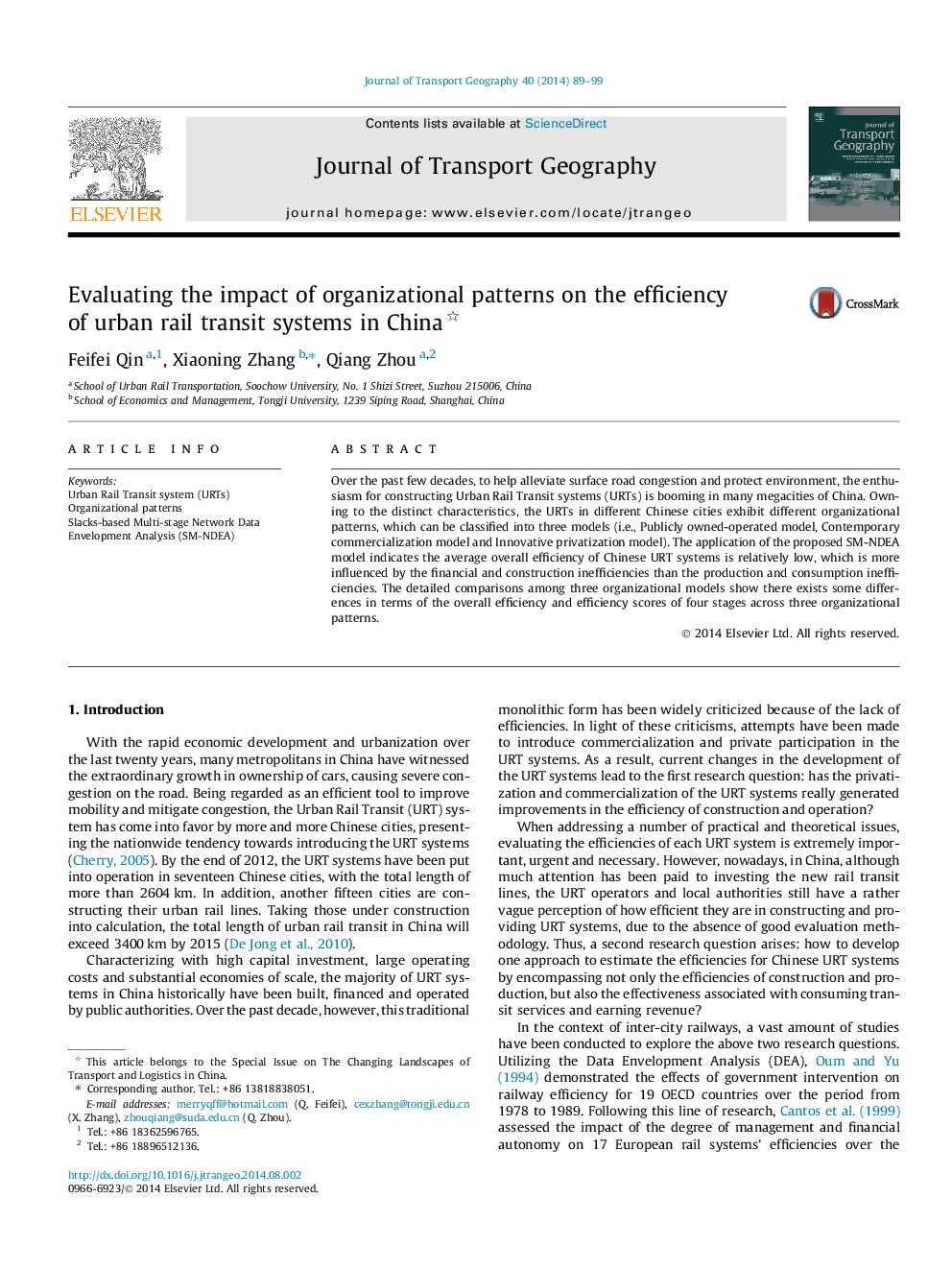| Article ID | Journal | Published Year | Pages | File Type |
|---|---|---|---|---|
| 1059056 | Journal of Transport Geography | 2014 | 11 Pages |
•A slacks-based multi-stage NDEA model taking account of site characteristics is proposed.•The overall efficiency and its four components are measured and compared to identify the source of inefficiency in Chinese URTs.•Organizational pattern exerts a significant influence on the efficiency.
Over the past few decades, to help alleviate surface road congestion and protect environment, the enthusiasm for constructing Urban Rail Transit systems (URTs) is booming in many megacities of China. Owning to the distinct characteristics, the URTs in different Chinese cities exhibit different organizational patterns, which can be classified into three models (i.e., Publicly owned-operated model, Contemporary commercialization model and Innovative privatization model). The application of the proposed SM-NDEA model indicates the average overall efficiency of Chinese URT systems is relatively low, which is more influenced by the financial and construction inefficiencies than the production and consumption inefficiencies. The detailed comparisons among three organizational models show there exists some differences in terms of the overall efficiency and efficiency scores of four stages across three organizational patterns.
